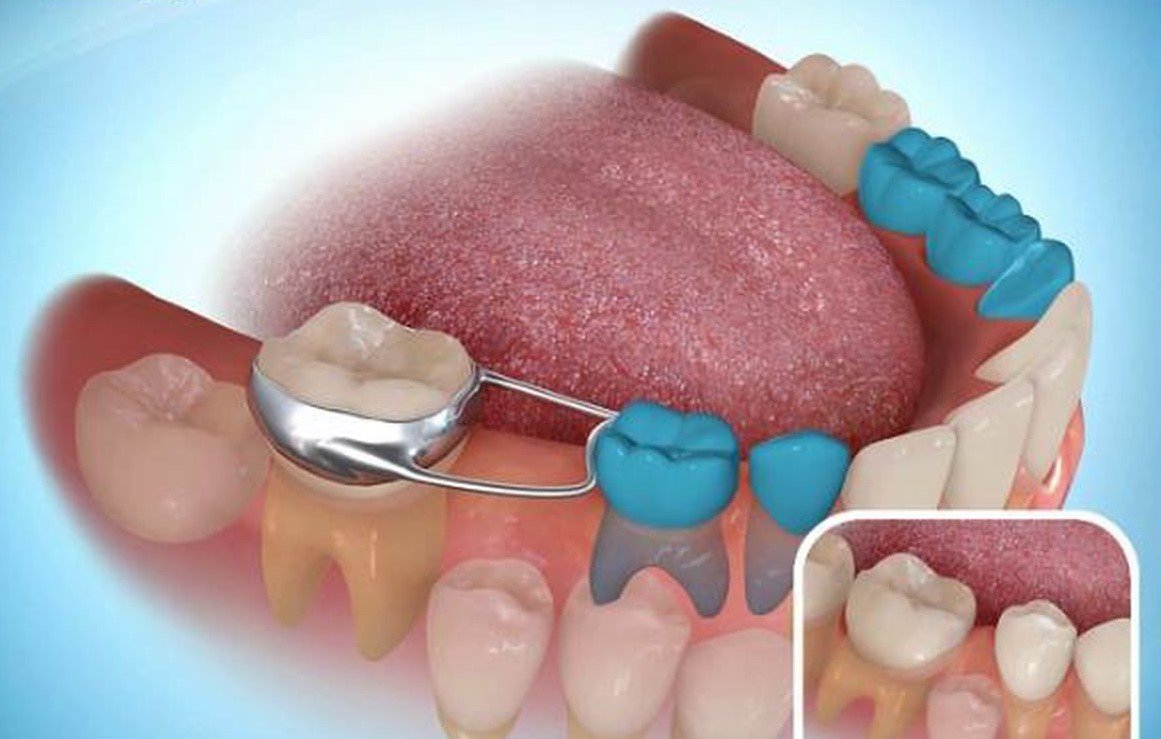Space Maintainers
If a permanent or baby back tooth is removed, a space maintainer is usually recommended to prevent the teeth from shifting. In the case of a permanent tooth, the space maintainer is designed to hold the space until a permanent restoration (such as a bridge or implant) is placed. In the case of a baby (primary) tooth, a space maintainer is placed when the baby tooth has been removed prematurely, usually due to the tooth being broken or infected (abscessed). The baby space maintainer is designed to hold the space until the permanent tooth underneath erupts, and then the space maintainer will be removed.
Band and Loop
Band and loop space maintainers are designed to hold the space of one missing back tooth. The band wraps around one neighboring tooth, and the loop rests gently against the other neighboring tooth. They are cemented with a permanent cement, but can be easily removed at a dental visit with no numbing needed. Band and loop space maintainers can be made in-house in a single office visit.
Whole Arch
If there are back teeth missing on both sides of the same arch, a whole arch space maintainer may be recommended. On the upper arch, a band wraps around a molar on each side, then a small acrylic “button” rests against the upper palate to prevent the teeth from shifting. On the lower arch, a band wraps around a molar on each side, and a metal bar gently rests along the tongue-side of the lower front teeth. These types of space maintainers are made by a lab, so they require two visits: one to fit the bands and take impressions, and another about 1-2 weeks later to deliver and cement the appliance.


